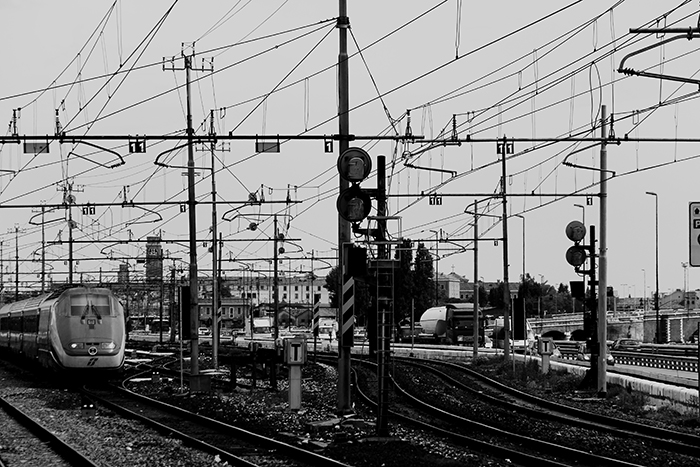
Today, we stand on the cusp of a massive re-imagining of how the world does business.
That’s really the only way we know how to describe the potential of the Industrial Internet of Things, which when fully realized should feature a network of connected smart devices that can share data and insights among one another.
The original internet revolutionized informational access just by linking computers — networking billions of industrial devices could reinvent two-thirds of the world’s industrial output, Accenture estimates. (We will return to Accenture’s optimism in just a bit.)
But the road between here and there is fraught with daunting obstacles, just as the first application of internet technology was. Below are 12 experts in the IoT field and some of the challenges they foresee in adopting and implementing this technology.
The Industrial Internet of Things Must Address Security Concerns
Logistics and supply chain commentator Steve Banker at Forbes puts cyber security at the top of the list of challenges facing IIoT.
“When one thinks of a hacker getting into a system and shutting down a utility, for example, it is obvious that the consequences of an IIoT security breach could be dire. And the IIoT makes this problem so much greater. Hackers need only a tiny tear in the security fabric and they can get in and cause harm. And as those connected devices grow exponentially, so do the entry points.”
Consultant Manny Mandrusiak writes at AutomatedBuildings.com about the moment he understood the difficulty security issues will present as various internets of things move forward.
That moment came as he watched a technician install a point-of-sale terminal in a coffee shop. The technician was having trouble connecting the new hardware to the coffee shop’s wireless network, and he told the staff that he had to escalate the issue to a superior because of security concerns.
“He started talking about security threats to the network such as mac spoofing (identity theft), network injection, and man-in-the-middle attacks,” Mandrusiak says. “It was an older building with a retrofitted network, and just how secure was that network? If the technician downstairs did not have the training to solve the point of sale system problem, then who did?”
That’s going to be a big question in the coming months and years. Mandrusiak writes that he imagines network admins and engineers will have to be trained to solve those issues, which means “those individuals are going to require more specialized skills and training as networks continue to shift into the cloud.”
More fundamentally, better industries-wide security practices will need to be adopted, National Instruments senior group manager Todd Walter told EE Times just before Christmas 2014.
“Controls engineers today frequently ‘air-gap’ systems to completely isolate from the external threats,” he said. “Before connecting operations systems to the IT system, guarantees on security and stability are needed.”
At a more granular level, technology research company Gartner believes that device manufacturers “might not be as security conscious” as the firms that manufacture the components, Network World’s Time Greene writes. This currently puts much more responsibility on customers’ shoulders to evaluate the security of a given device.
“Some of the leading vendors that are developing products are making some effort to address security concerns, but Gartner believes the majority aren’t at this stage — convenience, user friendliness, time-to-market all win out over security at this point,” Gartner research VP Earl Perkins told Greene.
The IIoT Will Require Huge Investments Over the Next Decades

The Accenture paper estimates the Industrial Internet of Things could add $6 trillion to the United States’ GDP by 2030. Getting to that point will require massive investments of money, time, energy and vision.
“Industrial infrastructure is no small investment,” Thor Olavsrud writes at CIO.com. “[National Instruments, as mentioned above] believes that developing and deploying industrial Internet systems will represent a massive investment for decades to come. That means it’s not enough to simply think about today’s needs or even immediate future needs when deciding where to invest.
“To be capable of adapting to changing requirements over time, you need to build on open, integrated hardware and software platforms, and you need a real-time network that can scale with new technologies.”
But changes this drastic aren’t simple line items on a budget. These kinds of investments require different mindsets and different ways of thinking about the technology involved.
James Hilleary, Director of Machine to Machine Products at Elecsys Corp., published an editorial in Remote Site & Equipment Magazine in August 2014 in which he argued industry must simply embrace new, stable communications technology as it emerges because that technology will only continue to evolve.
“In all likelihood, it will never be simple to navigate the ever-changing world of industrial communication technology, but with some foresight and planning, the benefits of fully immersing the enterprise into the data revolution of IIoT will far outweigh the challenges that will be experienced along the way,” he wrote.
Standards Will Be Exponentially Trickier For Everyone to Agree Upon
The cycles of obsolescence and what Gigaom researcher Adam Lesser refers to as industry’s “piecemeal” adoption of IIoT-level connectivity all belie an even thornier problem.
With so many individuals and companies working to build an Industrial Internet of Things all around the world right now, agreeing upon standards will take years and years.
“Having a common time standard, for example, is critical to coordinating tasks on a network,” Lesser writes. “Additionally, there are reliability standards related to reserving bandwidth for traffic and mechanisms for latency control so that measurements on different parts of a network can be reliably understood. If you think of a networked factory floor and you ask different nodes what time it is, you need highly consistent answers if you intend to add safe and reliable control to that network.”
Just in the building automation industry, innovations such as the Tridium Niagara Framework have been helpful in getting various devices to talk to one another, but Tridium is the exception rather than the rule.
Dave Greenfield at AutomationWorld.com writes that even the mindsets differ among people and organizations building IoT hardware. Some people think in terms of machine-to-machine communications, and others treat the technology as business intelligence.
“In all cases, however, the way in which data are sent back and forth between different IoT components is often loosely defined … if it’s defined at all,” Greenfield says.
“And there’s the rub. Without defined standards of interoperability, the IoT concept remains open to jockeying by suppliers of proprietary protocols, which means that the wide IoT concept we all tend to envision suddenly gets very narrowed into the ‘Internet of Some Things.’”
But there is hope already emerging on this front. LNS Research predicted in December 2014 that a consensus would emerge in 2015 as to how we should define an Industrial Internet of Things platform:
“Likely, this will be around four core capabilities, including: application development, connectivity, analytics, and cloud. In today’s marketplace, most vendors can offer two, some may be able to claim three.
“As new innovation, acquisitions, and partnerships emerge, so too will leaders and laggards. There will also be movement in how existing automation and software vendors leverage these platforms to develop new solutions in Quality, EHS, MOM, and APM.”
Note that this doesn’t mean the platform itself will emerge. LNS Research simply predicts we will have better defined the problems that an IIoT platform should solve.
User Fears Will Persist, At Least in the Short Term

Then, of course, comes pushback from the user side of the technology.
Some of that user reluctance will be a matter of pure momentum — entrenched workers used to doing things a certain way.
As Gaurav Khandelwal writes at enterprise mobile agency ChaiOne’s blog, “people are afraid of change and the unknown.”
“Because of this fear, organizations need to train and educate people on new technology so that they understand the value of it and how it works,” he says. “This training will help employees perform jobs that require higher level skills and prepare them for the future.”
Then, there are the people who view IIoT technology as an existential threat to jobs.
Here is where we return to Accenture, which optimistically dismisses that concern in a slide deck:
“Contrary to accounts of the growing threat from intelligent machines, the IIoT will make people’s work more engaging and productive,” Accenture’s team writes.
“Intelligent machines will automate mundane tasks, freeing up workers to perform more creative and collaborative work. Entirely new categories of jobs will be created and demand more flexible workplaces that will appeal to sought-after Millennials. The impact will be felt on the workforce at every level.”
Interestingly, economist John Maynard Keynes predicted in 1930 that the same thing would happen by the mid-20th Century thanks to what people were at the time describing as “labor-saving devices.” Keynes’ essay “Economic Possibilities of our Grandchildren” predicted a 15-hour work week for his grandchildren’s generation, which would be today’s Baby Boomers.
Nevertheless, Accenture’s researchers believe that the IIoT will create new categories of jobs and an increased demand among many sectors for digital literacy — a skill for which employers will pay a premium.
Credits:
Georgie Pauwels / FlickrJosé Martín / Unsplash
Joshua Earle / Unsplash

